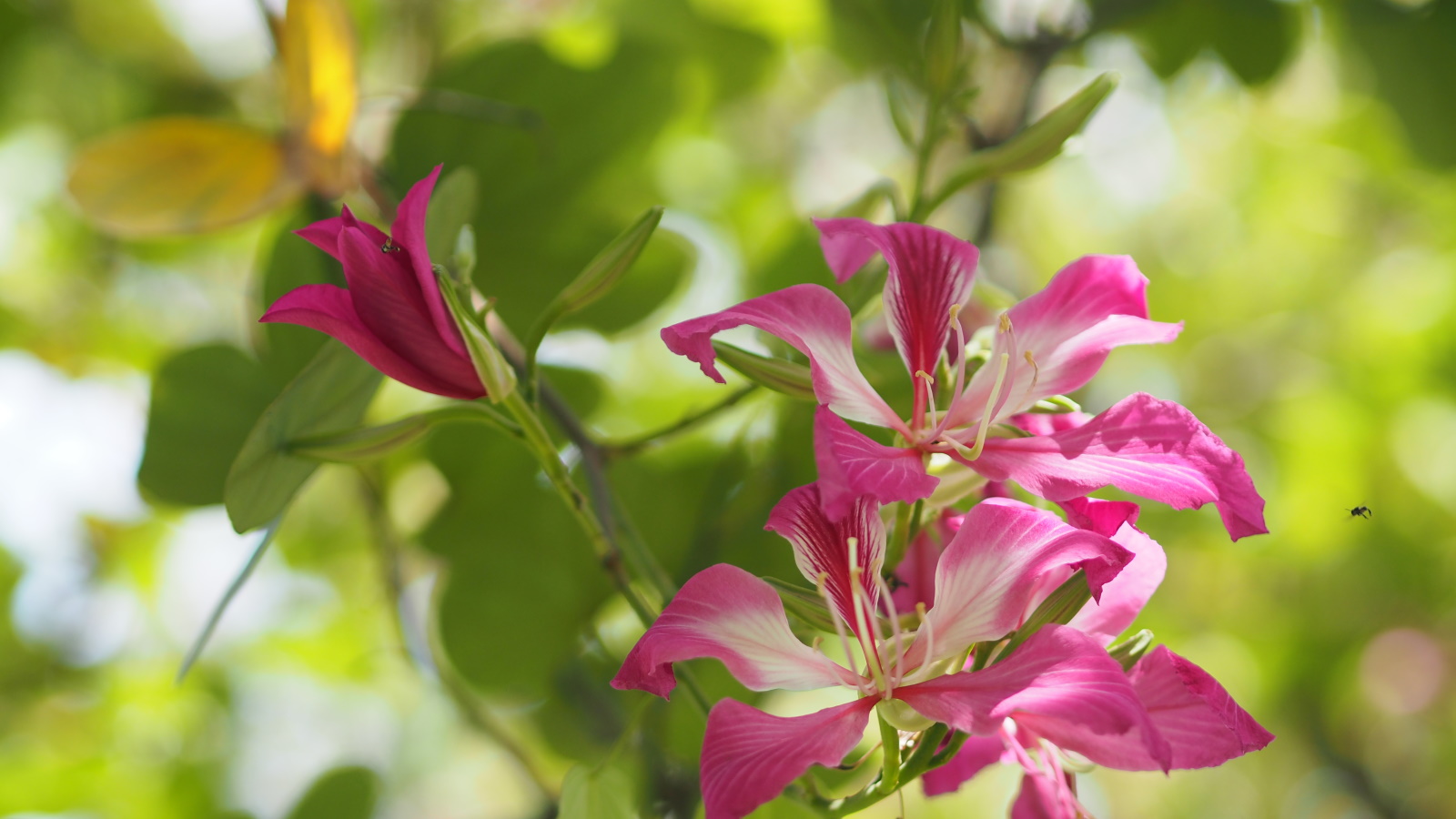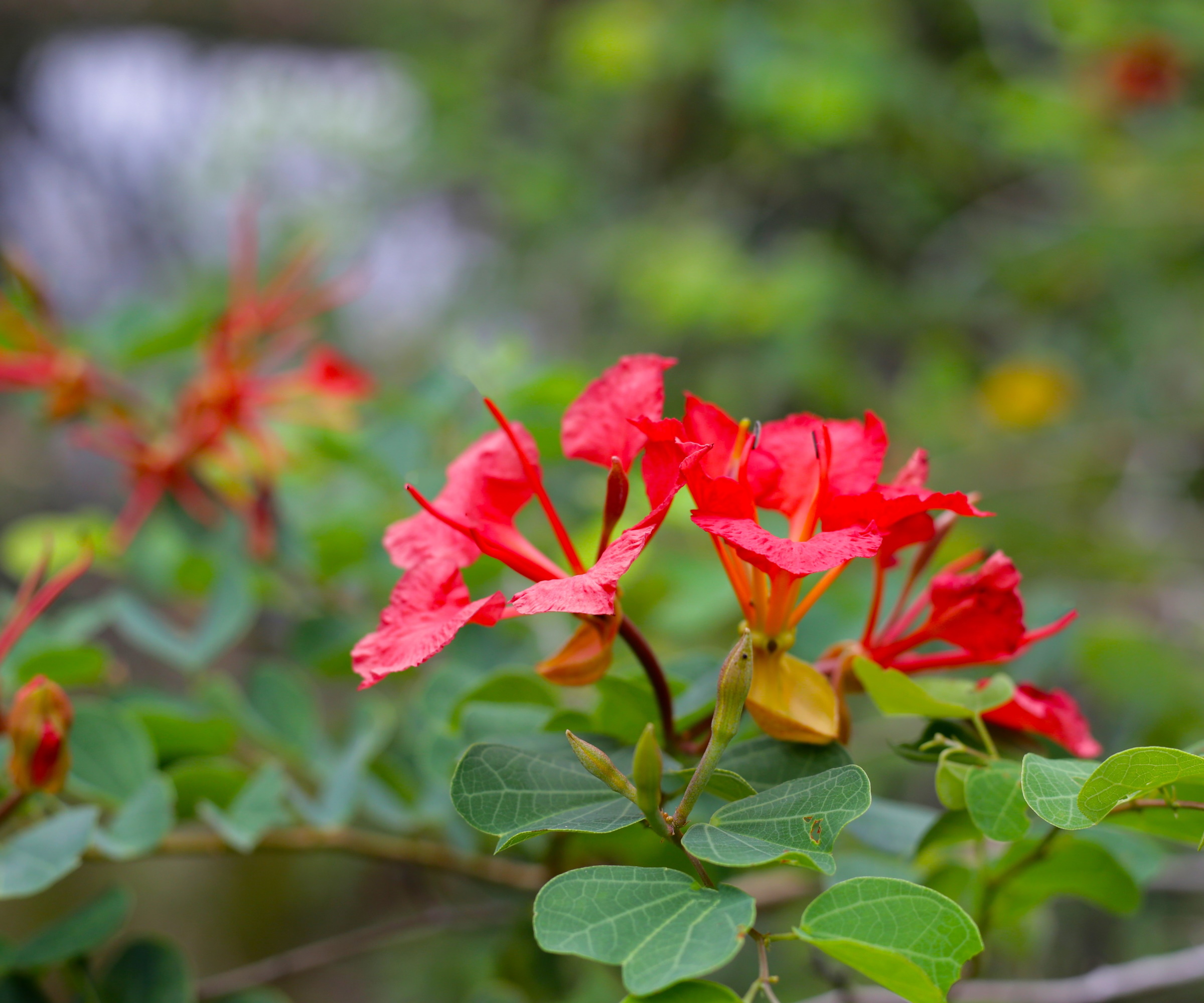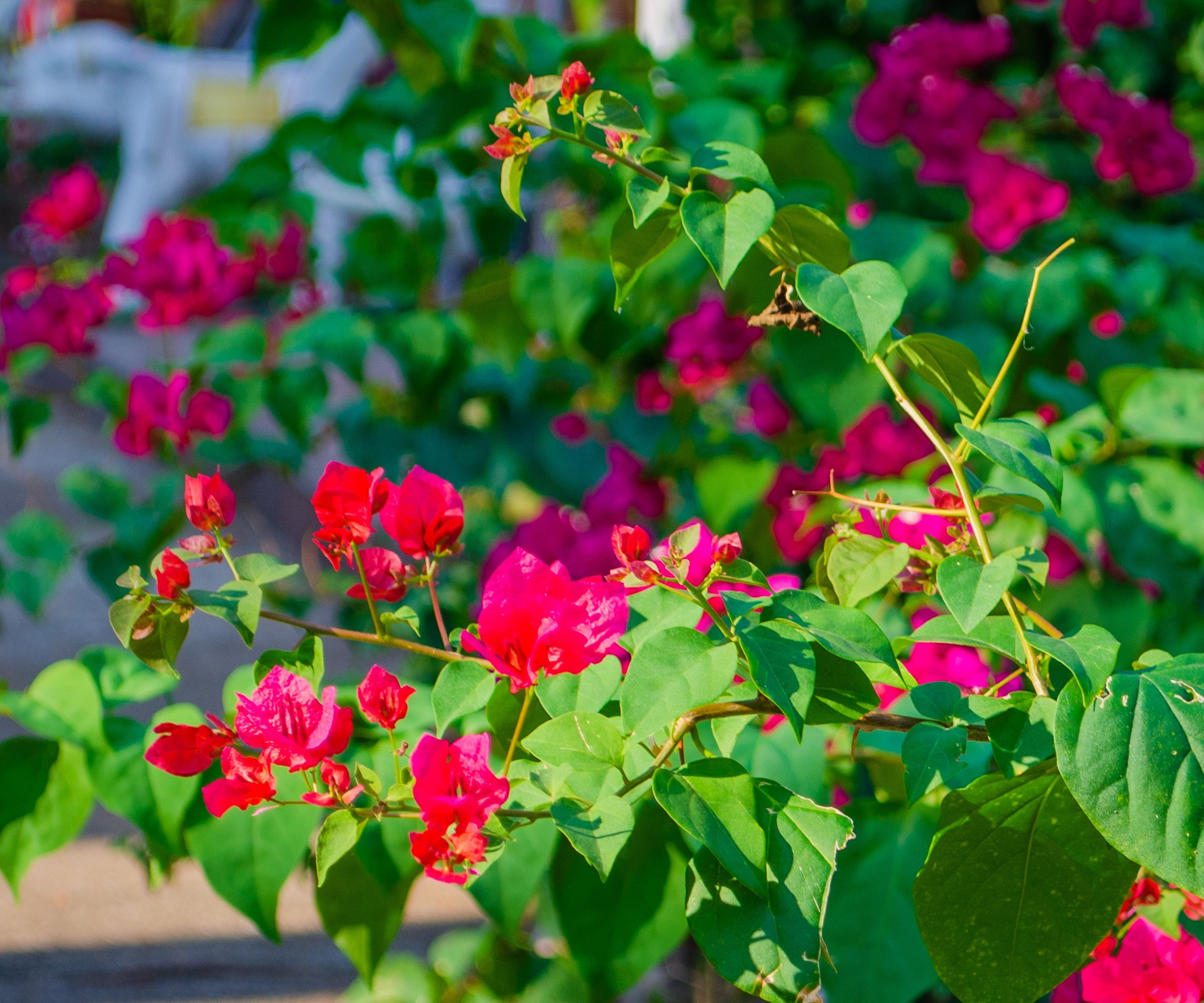
Orchid trees, scientifically known as Bauhinia, are beautiful and colorful flowering trees, celebrated for producing orchid-like blossoms. This small to medium-sized tree will add a vibrant and tropical look to any outside space, whether planted in a border or grown in a container. So, if you are seeking flower bed ideas or tropical garden ideas, a brightly colored Bauhinia might be the tree for you.
Orchid trees belong to the Fabaceae family, commonly referred to as the pea family, and are native to tropical and subtropical regions around the world. In the United States, orchid trees grow happily in California, Texas, Florida, Arizona and Louisiana, often thought of as one of the best flowering shrubs or trees for their unique floral display.
Bauhinia trees typically have five-petaled flowers that are produced in shades of red, pink, purple, orange, or yellow, flowering from late winter and often continuing to flower until early summer. Here, we share expert advice on how to grow and care for an orchid tree, to help you add this unusual specimen to your yard this year.

How to grow an orchid tree
Orchid trees are beautiful and vibrant flowering trees, renowned for producing orchid-like blooms that are striking and unusual. This small to medium-sized tree will add a tropical look to any outside space, whether grown in the border or in a container.
Things to know before growing an orchid tree

Orchid trees are 'renowned for their captivating flowers and unique foliage,' says Tatiana Anderson, tropical plant expert and co-founder of Top Tropicals. 'Thriving in US hardiness zone 9 and above, these trees exhibit great resilience to heat.'
Tatiana advises that 'these trees typically grow to a moderate height of 15 to 25 feet with a spread of 10 to 15 feet, showcasing a rounded to vase-like shape.' With over 300 species of Bauhinia, there is surely one to suit the needs of those looking for flowering shrubs for full-sun positions in the yard.
'Bloom time varies depending on the species and location, often occurring in late winter to early spring,' Tatiana says, 'bedecking the tree with striking orchid-like flowers in hues ranging from white and pink to purple and red.'
In tropical and subtropical regions, orchid trees can be evergreen, holding on to their foliage through the colder months. In cooler zones, bauhinia trees may lose their foliage as the temperature drops.
General advice for maintaining an orchid tree

- Soil: 'Well-draining soil is preferable for orchid trees to grow best,' says Tatiana. Ensuring that the soil is free-draining will prevent waterlogging which can cause root rot. If you need to improve the condition of your soil, incorporate some sand and grit when planting, and apply an annual organic mulch to maintain the quality of your soil.
- Light: Orchid trees 'thrive in a full sun position,' Tatiana adds. While this tree will tolerate growing in part shade, be warned that this will impact flowering. Low light levels will result in lower bloom numbers.
- Watering: Water your orchid tree regularly after planting, closely monitoring the soil during dry spells. Orchid trees are relatively drought-tolerant, but during the summer it is best to water deeply but infrequently, allowing the soil to dry out between watering.
- Fertilizing: 'Annual feeding with a balanced fertilizer enhances growth and flowering,' says Tatiana. One option is to use a slow-release fertilizer, available from Walmart, applying in spring when new growth begins. Always follow the instructions on the fertilizer packaging, being careful never to over-fertilize, which can lead to excessive foliage growth at the expense of flowers.
- Pruning: 'Pruning is generally optional but can be done in spring, after flowering, to maintain shape or remove dead or damaged branches,' Tatiana adds. Pruning before this time will impact flowering, so be sure that your tree has finished producing blooms before you reach for the secateurs. Always use sharp gardening tools, to ensure that your cuts are clean. If you need to upgrade your tools, there are many options available, such as these pruning shears from Walmart.
- Additional Tips: 'Orchid trees grow fast and provide excellent shade,' Tatiana says, making them perfect for those who reside in warm and tropical zones. 'They can make a shady spot in your garden in no time, giving relief from the hot sun.'
FAQs
Why won't my orchid tree bloom?
If your orchid tree fails to flower or the number of flowers is few, consider the position of your tree. Orchid trees grow and flower best when planted in full sun positions. If buildings or other trees block sunlight, you might need to consider transplanting, which is difficult to do. Always consider this when planting your tree, positioning it in the sunniest corner of the yard.
Growing an orchid tree in your yard will provide masses of tropical blooms in the years to come. Not only is this tree popular with gardeners, but pollinators will appreciate these unusual and vibrant blooms too. If you are seeking additional tropical shrubs for your garden borders, consider growing plumbago for brilliant blooms in a delicate sky-blue color.







